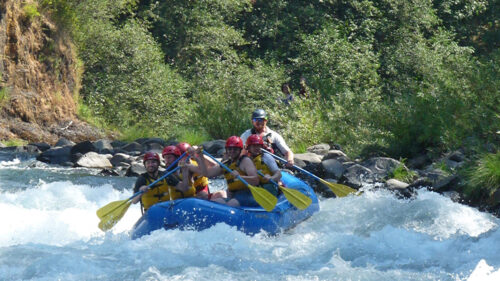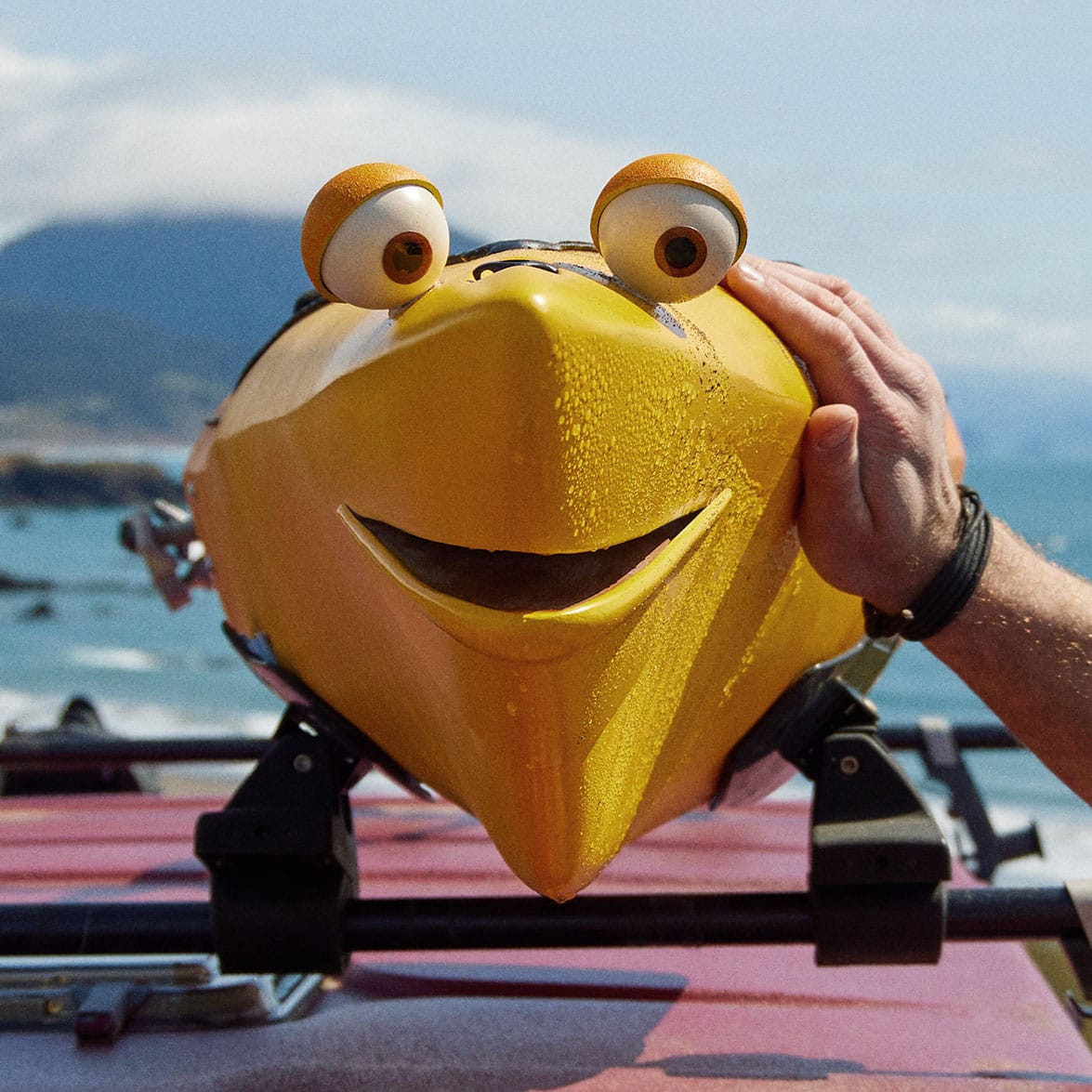Living in Hood River as I do, you get accustomed to seeing unusual activities on the Columbia River. Our little city has become known around the globe for the stout winds that reliably push through the Gorge, and for the world-class athletes who endlessly invent new ways to riff on their talents with a kiteboard or paddleboard. If there’s an emerging sport that involves water and wind, you can be sure to see it in Hood River.
The first time I spotted wingfoiling in 2019, I couldn’t quite make sense of what was happening. Two people balanced on boards out on the Columbia, clutching what looked like pool toys. But no telltale wakes trailed behind them as they glided upwind. They were above the river surface, soaring like seabirds. It looked incredibly graceful, somewhat intimidating … and I couldn’t wait to try it. Here’s what to know if you’re intrigued, too.
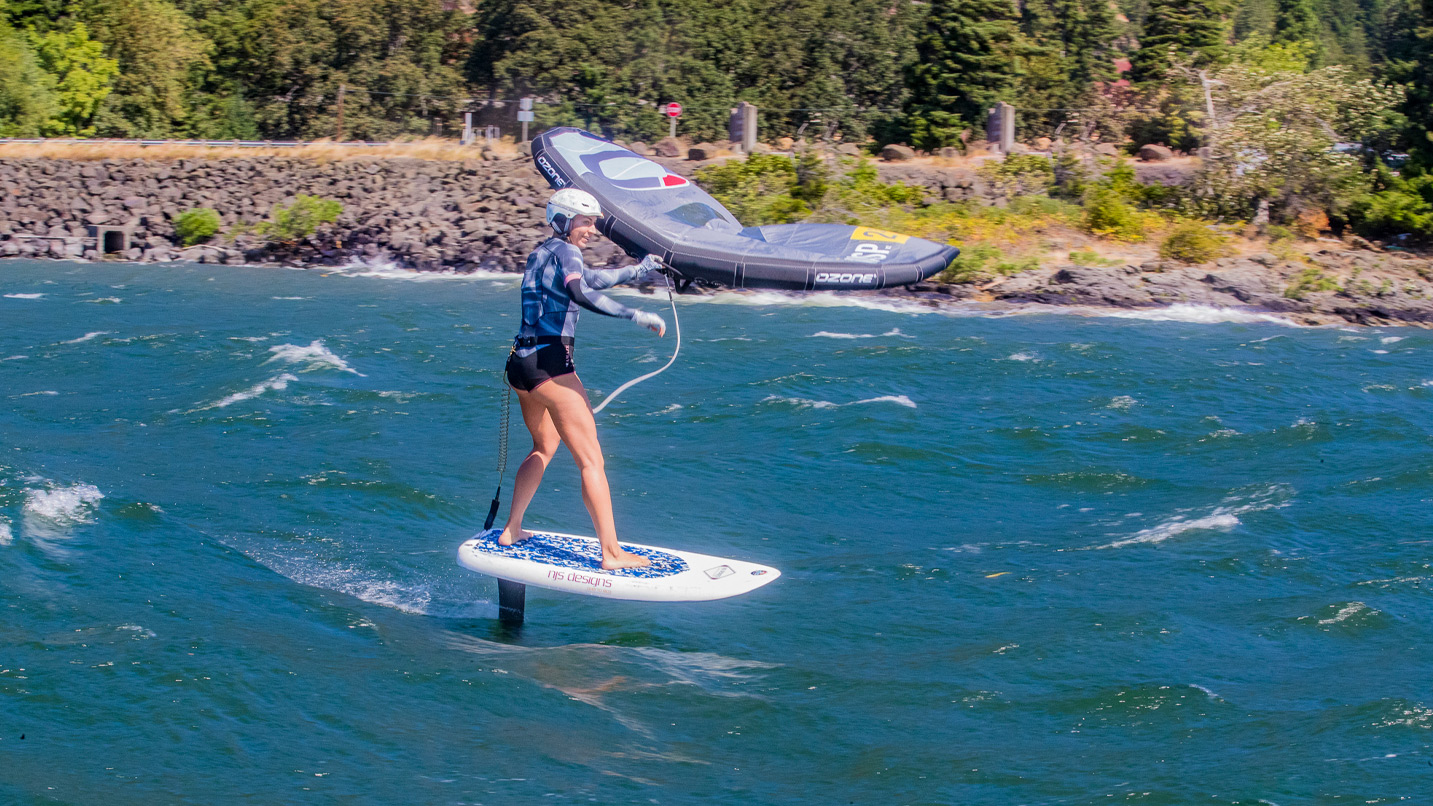
What Exactly Is Wingfoiling?
In its simplest sense, foiling refers to a hydrofoil, a techy carbon or aluminum contraption shaped roughly like an airplane that attaches to the bottom of a board or boat. Yacht racers were among the first to use hydrofoils, recognizing that a foil slicing through the water was way more efficient than a hull plowing across it.
The same concept translates to the boards we ride in the Gorge. With a foil lifting the board off the water, you no longer need a powerful windsurfing sail or airborne kite. With the water resistance dissipated, a handheld wing provides plenty of propulsion. Hood River-based Slingshot Sports was one of the first to bring wingfoiling equipment to market, ushering in a new way to play.
Many wingfoilers — or “wingers” — migrate from other water sports like windsurfing and kiteboarding, or add it to their repertoire. Because it looks so captivating, wingfoiling attracts a whole new crowd, too. It seems to be growing exponentially in the Gorge, where you often can see 50 or more people winging along the Hood River waterfront and dozens more rigs spread out on the grass.
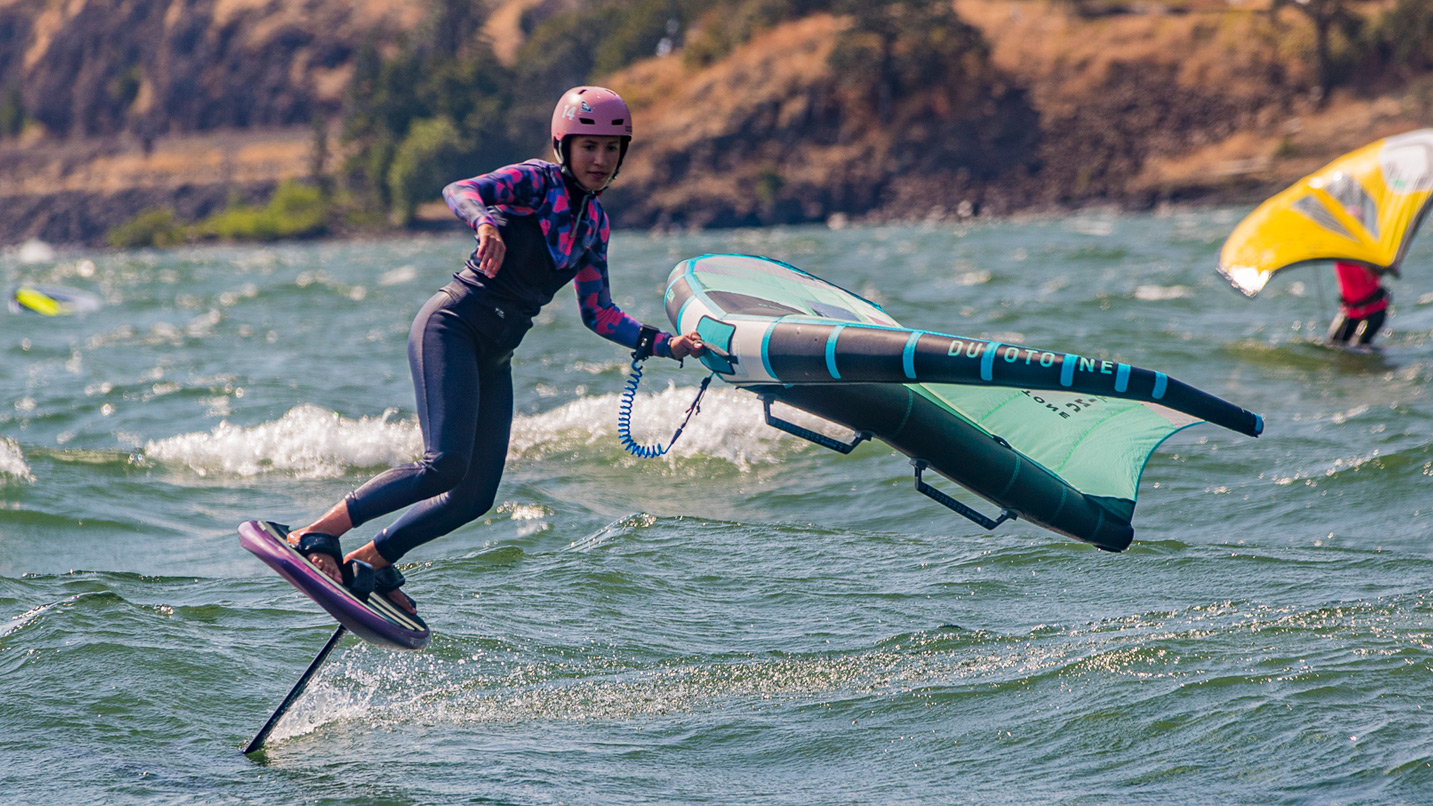
The Trials and Thrills of First Flights
Because I’ve spent years windsurfing in the Gorge and understand how to safely recreate on the Columbia River, I decided to give the sport a go on my own. But for someone new to water sports here, a lesson is a must. I invested in some beginner gear — a board, a hydrofoil and a wing — from Windance and headed down to Hood River’s Waterfront Park.
What I learned first was humility. Wingfoiling may look graceful, but there is indeed a learning curve that is decidedly not. As someone sympathetically explained, “It feels awkward until it doesn’t.” It takes more finesse than strength, figuring out the balance point and how to make the wind work for, not against, you.
Stubbornness probably helps, too. I spent more than a couple of afternoons climbing up on the board, falling in, drifting downwind and walking back from the Event Site. After a few more days of practice, I was able to stay on my feet and putter a little ways out into the river with the board still on the surface, learning how to use the wing to steer and gain speed.
As I grew more efficient and my speed increased, one day that fancy hydrofoil started to lift like a jet on a runway. The board rose out of the water. My splashing wake disappeared. And there I was, a foot or two above the Columbia, the river silent and sparkling below. I felt like I was skiing powder or — dare I say it? — soaring like a seabird.
Then I face-planted.
Variations of the face-plant would be repeated dozens, maybe hundreds, of times. So I wouldn’t say wingfoiling is easy. It took me the better part of a year to consistently get up “on foil,” maintain my speed and balance, and master gybing, or turning around. Still, that’s a pretty fast learning curve compared with other water sports.
More importantly, it’s been fun since day one. There’s the simple joy and natural beauty of being out on the Columbia. I’ve grown a bit obsessed with flying on foil and tackling each new skill. And I always enjoy the welcoming social scene on the beach, where more advanced riders help newbies, and everyone cheers everyone’s progress.
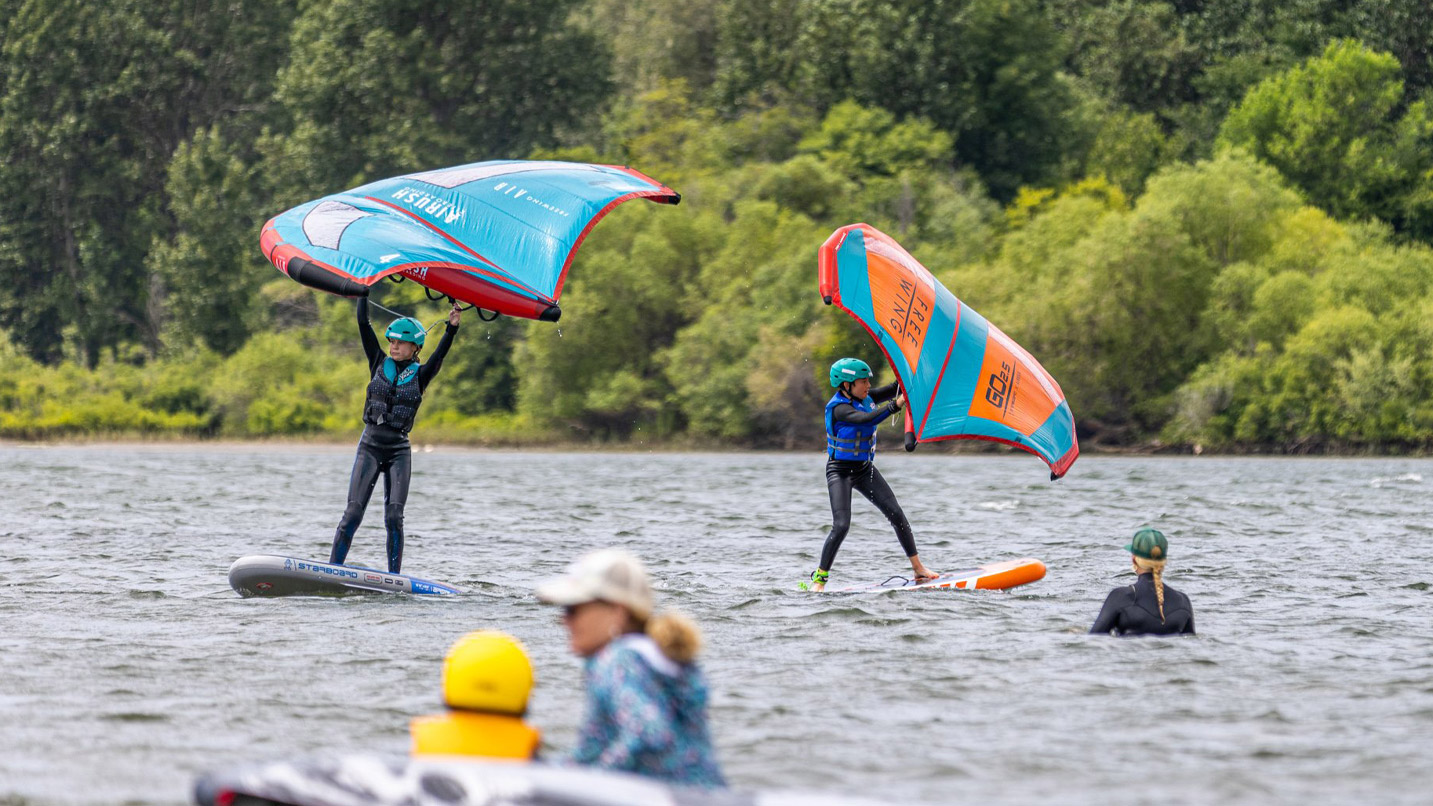
Learn to Wingfoil in the Gorge
Hood River is an ideal place to get started if you want to try it yourself. Local nonprofit Wylde Wind & Water hosts a free introductory clinic in July and August. Big Winds and Doug’s Water Sports offer lessons spring through fall. Once you’re ready to practice on your own, Big Winds and Northwave/GoFoil have rentals; they, along with Windance and Pure Stoke, also sell beginner gear packages.
With your gear and courage ready, it’s time to head for the Hook, Waterfront Park or Event Site, a trio of beginner-friendly launch sites on the Hood River waterfront.
“One of the fantastic things about the Gorge is that it works so well for people at every level of the sport,” says Fiona Wylde, founder of Wylde Wind & Water. “Whether you’re a beginner who needs a protected area with flat water or an advanced rider looking for more wind and swell, you can find it here and progress naturally. And since we get lots of wind, there’s lots of opportunity to practice.”
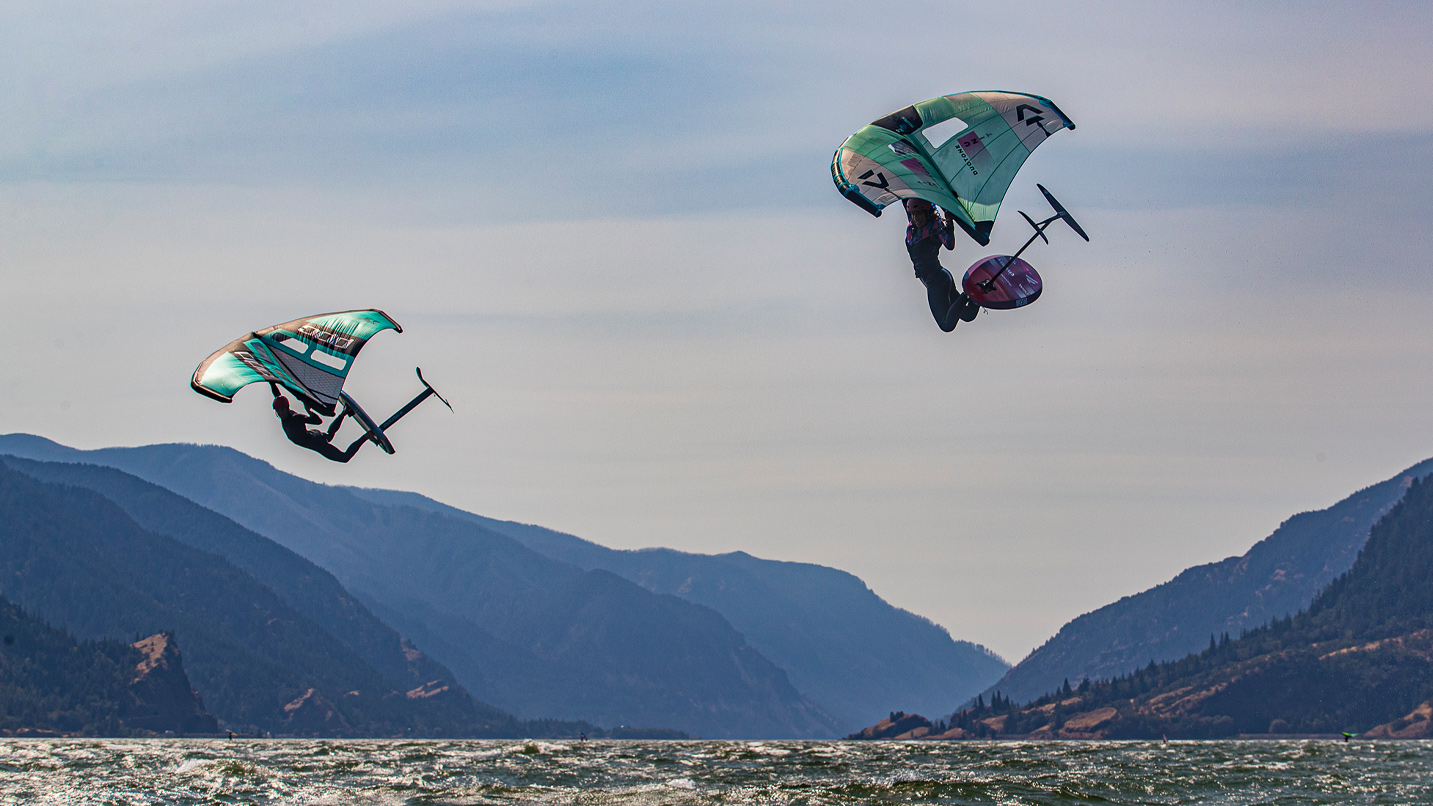
Sharing Enthusiasm for the Sport
Wylde, by the way, happens to be one of those aforementioned world-class athletes. The 26-year-old Hood River native is a three-time stand-up paddleboard world champion. She took up wingfoiling in 2019 and promptly crushed that, too, nabbing three world cups in Morocco and Italy. “I started wingfoiling for the same reason everyone else does,” says the disarmingly humble Wylde. “It’s a fun new challenge I can enjoy with my friends. The feeling is so compelling, it’s contagious.”
When she’s not circling the globe for competitions, Wylde throws her energy and enthusiasm into her growing business. The nonprofit runs a weekly wingfoiling clinic, youth development camps and Viento y Agua, an introductory wingfoiling program for the area’s Latino community. It emphasizes water safety and provides paid internships for students from Hood River County to gain experience in the water-sports industry.
“My career would be very different without this phenomenal community,” remarks Wylde. “It’s fun to pass on these opportunities, especially for young women and Hispanic families. We want everyone to be able to get on the water and enjoy what we have here.”
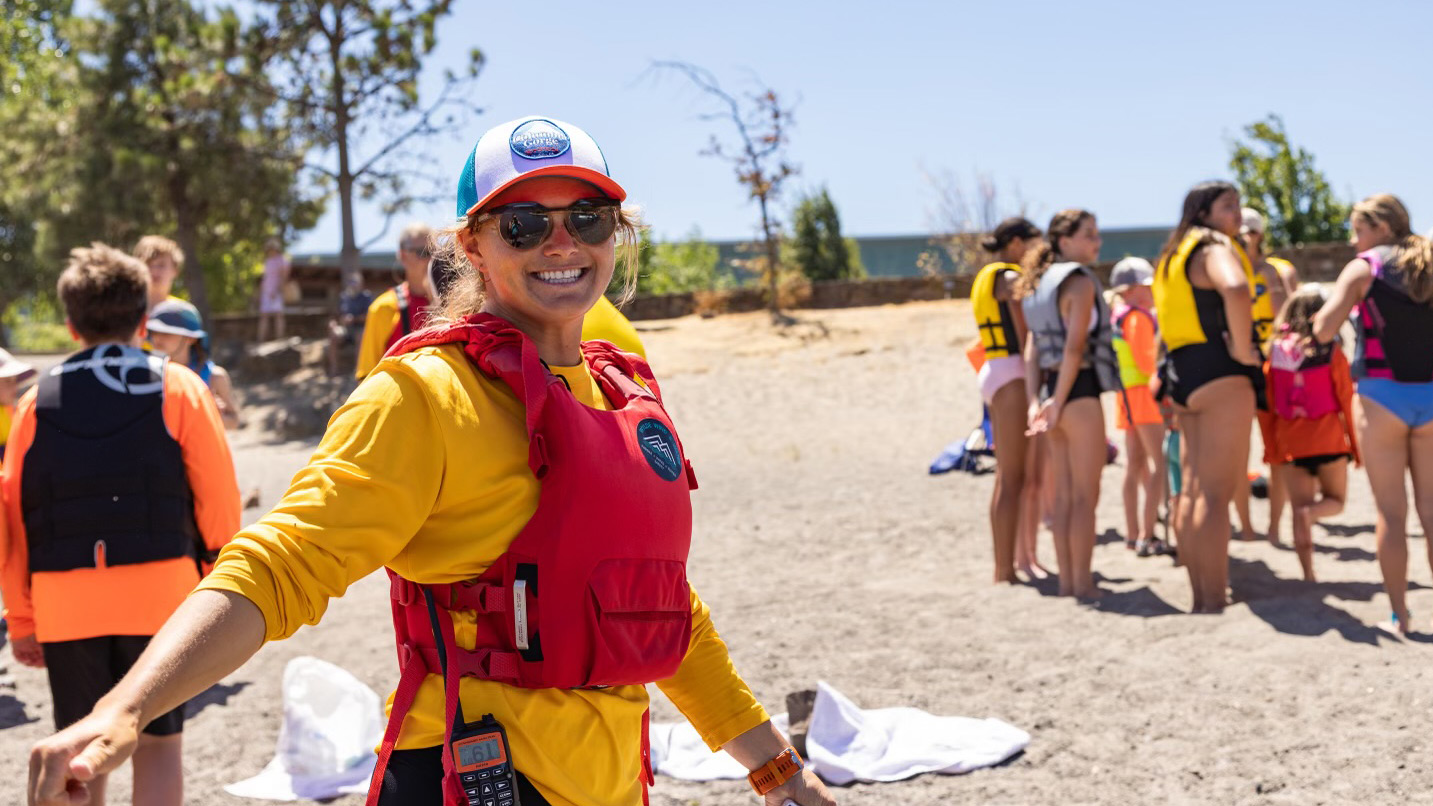
How to Get Started Safely on the Columbia River
- Wear a life jacket, a wetsuit and a helmet — ask about safety gear if you’re renting or taking lessons for the first time.
- Respect the river. Be prepared for cold water, swift currents and strong wind. Wind conditions are often lighter in the early morning and evening.
- Stay near shore when learning. Work with an instructor or practice with a partner.
- Watch for other river users, boat traffic and fishing nets. Stay out of the barge lane marked by red and green buoys.
- Use designated launch areas only.

